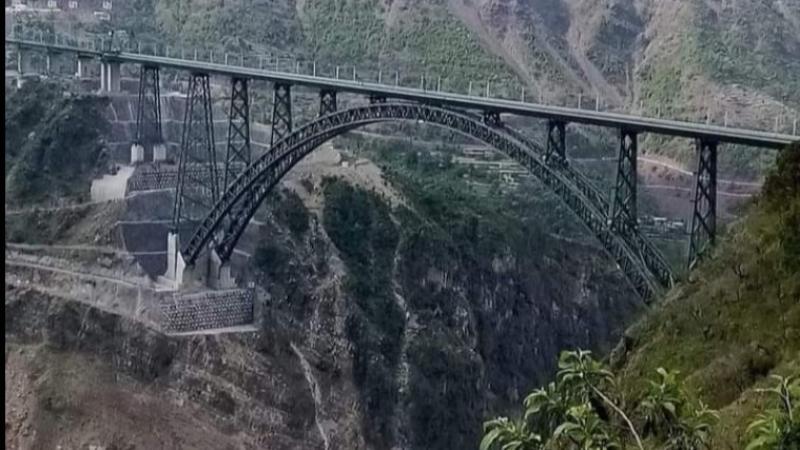Breaking: Scientists Unveil Groundbreaking Study on Stability of Indian Railway's Tallest Bridge

Bengaluru, January 7, 2025 - A new study from the Indian Institute of Science (IISc) has provided significant insights into the stability of the Chenab Bridge, a remarkable feat of engineering located in the Himalayan region of Jammu and Kashmir. The 359-meter-tall bridge, designed to withstand winds of up to 266 km/h and earthquakes of significant magnitude, is not only an architectural marvel but also poses unique challenges for engineers due to the unstable slopes it rests on.
The study's findings have shed light on the mechanisms of rock slope failures and addressed concerns about the stability of the rock slopes supporting the bridge. Researchers employed a combination of advanced analytical methods, field investigations, and engineering designs to address the complex geological conditions in the region.
"It was essential for us to understand the complex structure of the Himalayan rock masses to determine how they behave under different conditions," said [name], lead researcher on the project. "By employing techniques such as Kinematic Analysis, Wedge Analysis, and Finite Element Modeling (FEM), we were able to integrate various approaches to predict both local and global failure risks."
The study's findings emphasize the value of modelling explicit joints in complex geological conditions, highlighting that jointed rock masses behave differently compared to homogeneous materials. The researchers' approach provided more realistic factors of safety and allowed engineers to design targeted reinforcement measures, such as rock bolts, to mitigate specific risks.
Experts recommend adopting advanced modelling techniques like FEM with explicit joints for future critical infrastructure projects. They also advocate for a hybrid approach that integrates continuum and discontinuum modelling in challenging terrains.
The study's importance extends beyond the Chenab Bridge, offering a robust framework for analyzing and stabilizing jointed rock slopes in highly complex geological environments. By leveraging advanced techniques like FEM with explicit joints, engineers can ensure the safety of such infrastructure projects while providing valuable insights for future geotechnical endeavors.
Stay updated: Follow us for more groundbreaking research stories from India!
